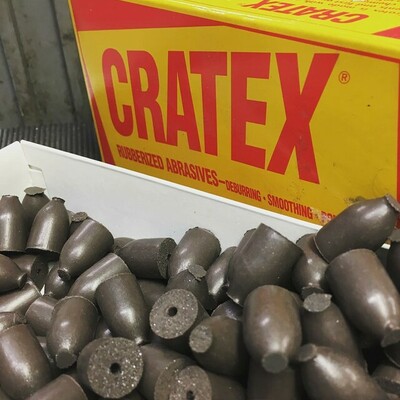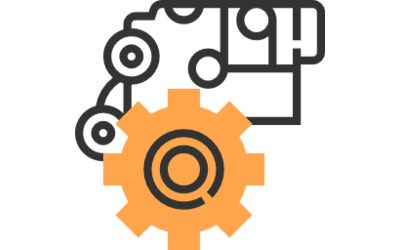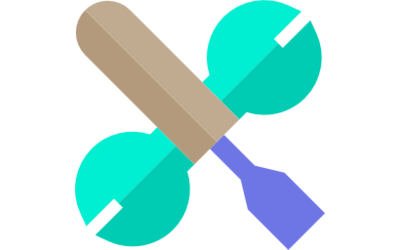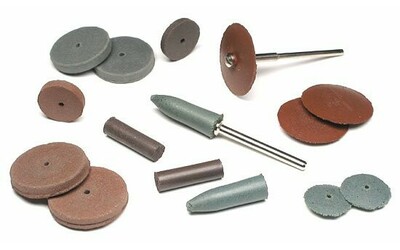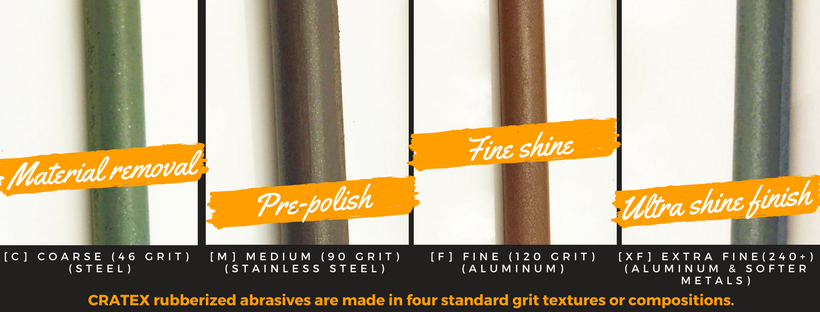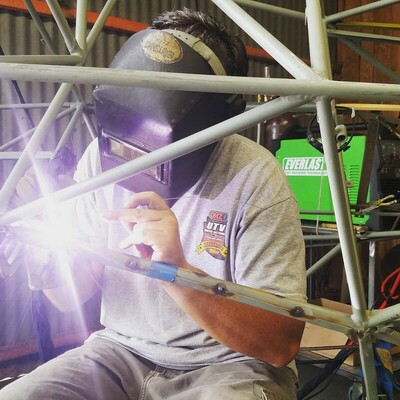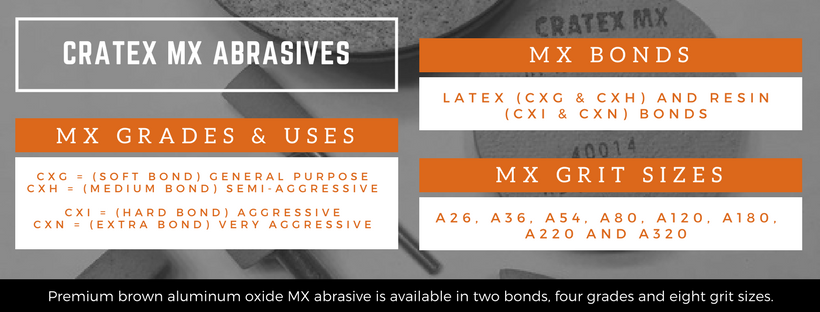We had a pleasure and great opportunity to interview Kieran Berard from Precision Deburring LLC. Kieran is a true industry expert with over a decade of experience. In the lines below, he’ll introduce his company and shared valuable info about how CRATEX rubberized and MX abrasives make every day job easier for his crew. If you are interested to see some of Berard’s recent projects visit Precision Deburring Instagram channel.
Welcome, Kieran! And thanks for accepting to do this interview with us. Could you please tell us a bit about yourself?
- I've lived in MA my whole life and the manufacturing industry is thriving here and has been for years. I started my own business because I saw the potential and need for a deburring company and I've enjoyed doing it as a career.
How long have you been working in a company that specializes in deburring?
- I started Precision Deburring with a business partner about 3 years ago now. I have been in the industry for about 11 years. I started deburring when I was 15 years old and stayed with a company that taught me everything about it for 8 years. From there I became a deburring supervisor for another company that taught me more about the industry as well as different aspects of it such as machining and heat treating.
What are your company’s focus industries and what can you tell us about it?
- Precision Deburrings main focus industries are aerospace and military. We do specialize in medical as well but don't see as much of it as aerospace.
Can you describe a day on the job as a deburring expert? Or your typical work week if more suitable?
- A typical work week can get kind of hectic when you have a small shop of 4 guys all working on hot jobs to make a deadline. Many of our customers will call multiple times a day to check the status of certain parts to make sure we are meeting deadlines. That is our number one priority; on-time delivery. We have local machining shops stopping by throughout the day dropping off more work and taking completed parts back. We are located in a very central part of Westfield, MA and that location makes it very easy and suitable for our clients.
What's the last project that you guys did that was especially challenging? (you're welcome to send a picture and a short explanation)
- We attended EASTEC a few months back at the BIG E in West Springfield, MA. Our goal was to find a newer setup to replace our DOTCO airguns which we use to put edge breaks on every part we do. We were able to find something much better called the NSK ESPERT-500. Unlike the DOTCO these are electric powered pencil grinders. We had an issue with our compressor being too loud for when customers came into the shop and wanted something more simple and more energy efficient.
When it comes to aerospace industry, what would you say are the most essential tools you need, especially if you are an amateur dealing with kit planes?
- I would have to say it depends on the type of material you are deburring. For example, if we are deburring an aluminum housing we would typically use CRATEX Air flex wheels to do the lead thread on various ports throughout the part. We use the MX CRATEX wheels as well on steel and titanium parts to blend mismatch tooling marks. So it really depends on what material you're working with and what you need to accomplish on that certain part.
Do you use abrasives mostly for cutting or deburring & polishing?
- We usually use abrasives more so for deburring and polishing. We typically use carbide based tools to cut or put an edge break on our parts.
What type of abrasives you use: wheels, points, cones etc.?
- We use wheels mostly and will on occasion have a use for the cones and points.
What shape, size (diameter) and grit type are mostly used in kit aircraft manufacturing?
- Lots of MX Wheels are used in 80 grit to blend mismatch or remove smeared material. We also use CRATEX small wheels of course and extra fine grit.
Do you use rubber abrasives, or you need something more aggressive like aluminum oxide abrasives?
- Yes, in all the parts we work on we generally use something more aggressive unless we come across a job that has tight tolerances. In that instance, we would use something less aggressive such as rubber abrasives.
Our marketing team came across a forum thread where one craftsman praised CRATEX KIT 767 and said that he used it for deburring. Have you heard about it/tried it?
- Yes, we have tried that kit and we mostly found that the Bullet Points worked the best for what we had to accomplish. So instead of buying the kit we just order the points in whatever grit we need at the time.
We like the quality and material your tooling has. It can be hard to find tools with durability and last for more than one part. A lot of times we'll do one lot of parts and only need one CRATEX tool which is great. We definitely like the strength and durability.
If we were to ask you to create a kit meant especially for those in the aircraft industry by using CRATEX products, what would be in it?
- Here is an example of a kit that I came up with that my shop would benefit from:
8 Straight Wheels No. 86 - 1" dia. x 3/16" thick
8 Straight Wheels No. 80 - 1" dia. x 1/8" thick
8 Straight Wheels No. 74 - 7/8" dia. x 1/8" thick
8 pieces Q8-M
8 pieces Q11-M
10 MX Wheels Q40294
How did you learn about CRATEX products? The official website, forum/blog, recommended by other people in the industry?
- I was taught young the ways of deburring and used your products daily so I was introduced to your brand since I first began in the industry. Other than that I've seen you on social media and ordered tools from your website.
Do you use any other CRATEX products besides rubberized abrasives?
- As of now we typically just use rubberized as well as MX abrasives.
Why did you choose our products instead of some other manufacturer?
- Many other manufacturers do not have the same or similar products that you do. We choose to get our products strictly from you in the fact that you are the only company that has the items we need.
What do you like the most? Quality & Material, Price, Customer service, etc.?
- We like the quality and material your tooling has. It can be hard to find tools with durability and last for more than one part. A lot of times we'll do one lot of parts and only need one CRATEX tool which is great. We definitely like the strength and durability.
Is there anything we could do to make you a more satisfied customer? (product improvement/online store/website/other)
- I think I'm very satisfied with my customer service and always receive my products on time and prompt.
Would you recommend CRATEX products for deburring to others, and if yes, how would the recommendation sound?
- Yes, and I have in the past. A lot of people in the industry talk about how things are done and tools come up a lot. We share with each other what we did to a certain part and we always recommend using CRATEX tools.
